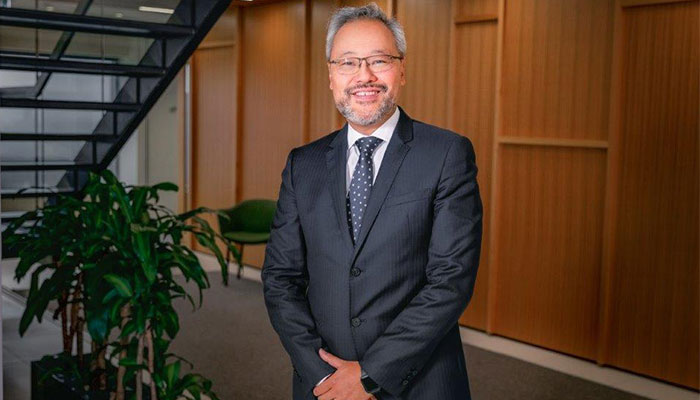Care normally increases towards the end of a cancer patient’s life, especially while their prognosis is still uncertain or when treating potentially reversible conditions such as infections, but not all care improves their situation.
Potentially burdensome care is any care that does not significantly improve a patient’s health and has a negative impact on their quality of life in their final days, such as intravenous chemotherapy in the last two weeks of life or being put on mechanical ventilation.
In a paper published in the journal BMC Palliative Care, researchers from Macquarie University, UNSW and QUT examined health data for 80,005 adults who died from cancer-related causes between 2014 and 2019 in NSW, linking mortality information from the NSW Registry of Births, Deaths and Marriages with hospital records and the NSW cancer registry.
They used four of 10 indicators of potentially burdensome care identified in previous research to create a composite indicator of care in the last 30 days of a person’s life: more than one emergency department (ED) visit; being admitted to hospital more than once; being admitted to an intensive care unit; and dying in acute care (in hospital but not in palliative care).
Lead author, Professor Rebecca Mitchell from the Australian Institute of Health Innovation at Macquarie University, says while this sort of care is aimed at prolonging life, it can sometimes prevail over more comfort-based care, and it has the potential to reduce the amount of time people are able to spend at home.
“Encouragingly, we found that 69 per cent of people included in the study did not have any of these indicators of potentially burdensome care, but 20 per cent had one and 11 per cent had two or more,” she says.
“When we looked at the demographics, people who smoked, people who lived in rural areas, people who were socioeconomically disadvantaged, and those whose final hospital admission was to a private hospital were most likely to experience potentially burdensome care.
“Those who were the least likely to experience potentially burdensome care were people of both sexes aged 55 or older, women and those with one or more other health conditions.”
Location counts
Some indicators of potentially burdensome care can be related to the services available in the area where the person lives. For example, cancer patients are more likely to visit an ED or die in acute care in places where sufficient community-based palliative care and primary care are not available.
The study found that more than two-thirds of cancer patients died in a healthcare facility, with 17 per cent dying in acute care.
Well-designed palliative care has the potential to reduce both potentially burdensome end-of-life care and any pain experienced.
This is compared to 20 per cent of cancer patients dying in acute care in the Netherlands, 50 per cent in Canada, 53 per cent in Austria, 56 per cent in Switzerland and 63 per cent in Taiwan – percentages that reflect factors such as availability of palliative care.
Professor Mitchell says in Australia, particularly in regional areas, ED visits and/or hospital admissions may be being used as a substitute for community-based palliative care.
“Private hospitals, in particular, may be acting as de facto hospices, which may also explain the private hospital admissions at the end of life,” she says.
“Well-designed palliative care has the potential to reduce both potentially burdensome end-of-life care and any pain experienced.
“The provision of palliative care in the last 30 days of life has also been associated with people with cancer being five times less likely to experience potentially burdensome end-of-life care.
“The Australian Institute of Health and Welfare has found that 42 per cent of hospital-based palliative care is dedicated to people dying from cancer, but it seems that may not be enough.”
Putting the patient at the centre
Cancer remains one of the leading causes of death worldwide. Each year, about 49,000 Australians die from some form of the disease and 151,000 new diagnoses are made.

Patient first: Professor Rebecca Mitchell, pictured, says taking a person-centric approach could help improve end-of-life care.
As the population increases and ages, the number of people living with – and dying from – cancer is also expected to increase, adding to the challenges for healthcare, including end-of-life care.
Professor Mitchell says opportunities to address potentially burdensome care could involve taking a person-centric approach to integrate oncology and palliative care around individual needs and preferences.
“We are certainly not suggesting that hospitals and clinicians are not providing good care,” she says.
“What our results highlight are the challenges of providing end-of-life services and integrating oncology and palliative care with what the individual and their family want and need.
“This is about recognising some of the signs and symptoms of the end of life and taking a more comfort-based approach at that point, rather than trying to provide treatments that are not going to result in improvement in their condition and may instead reduce their quality of life at the end of their life.
“The aim will always be for people to be able to spend their last days in the place of their choosing and remain as comfortable as possible.”
Professor Rebecca Mitchell leads the Health and Societal Outcomes research stream in the Australian Institute of Health Innovation at Macquarie University.



